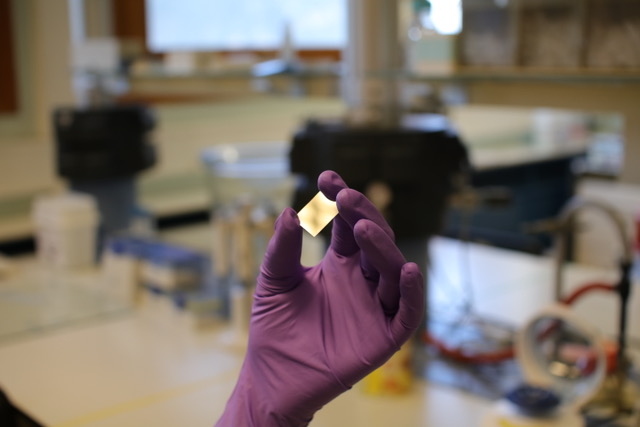As the ISS (International Space Ship) is located 400 km above the Earth, in an almost total vacuum, one might expect its environment to be sterile. However, the microbiota of ISS occupants naturally releases bacteria, and the space station environment is full of bacteria and fungi. Cleaning can account for up to 10% of a spaceman's working time. Bacteria can attach themselves to surfaces, proliferate and form biofilms that are extremely resistant to washing, while in suspension they end up trapped in the ventilation systems. The solution: anti-bacterial surfaces.
The microgravity of the ISS requires the creation of new types of surface coatings, which cannot necessarily be based on solutions used on Earth. The actual surface treatment developed during the MATISS (Microbial Aerosol Tethering on Innovative Surfaces in the International Space Station) campaign consists of depositing nanometric layers of a chemical agent (fluorinated compounds, for example) on glass, which will protect the steel and aluminum surfaces of the ISS by preventing the deposition and proliferation of bacteria.
In collaboration with Yoann Roupioz from our laboratory, researchers are now turning to bio-inspired solutions, free from toxic components and nanoparticles, to create new anti-microbial surfaces. His team has been using anti-microbial peptides in their sensors targeting pathogenic bacteria for several years. So, it was natural that CEA-Leti, in charge of surface treatments, asked Yoann to use and test his anti-microbial peptides on board the ISS.
A second series of samples was launched on board the ISS by a SpaceX Dragon rocket on Monday June 5, 2023. For this mission, 4 devices designed by CEA-LETI, each containing 6 quartz slides made from pure silica, were chemically functionalized at CEA-LETI and at our laboratory. The aim is to create 6 different antibacterial surfaces, exposed to the ISS environment for 8 months (for two devices) and 16 months (for the last two). On return to Earth, all the samples will be analyzed and their antimicrobial properties assessed at ENS Lyon.

© Y.Roupioz
The results of this new test track will be known in 2025.